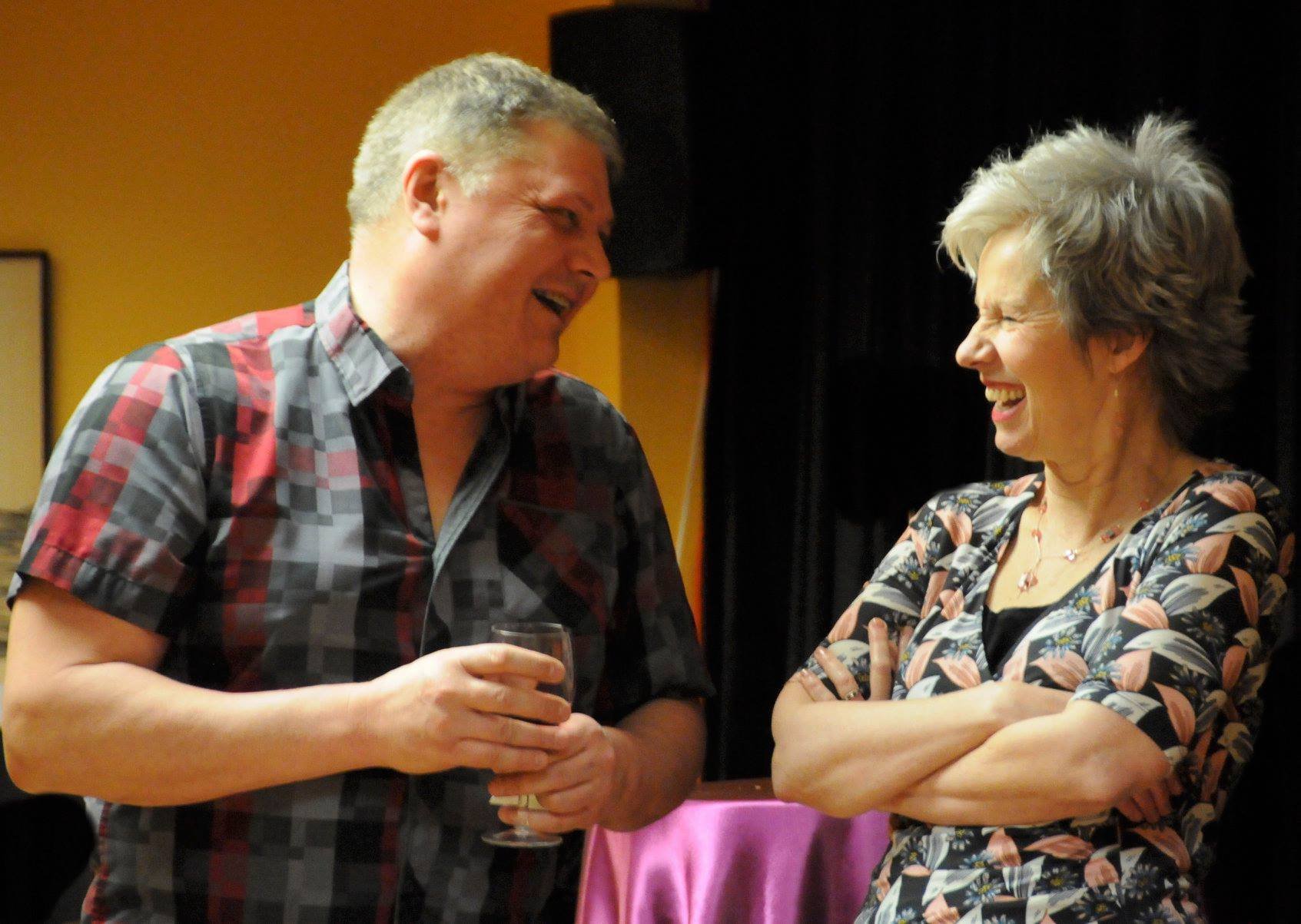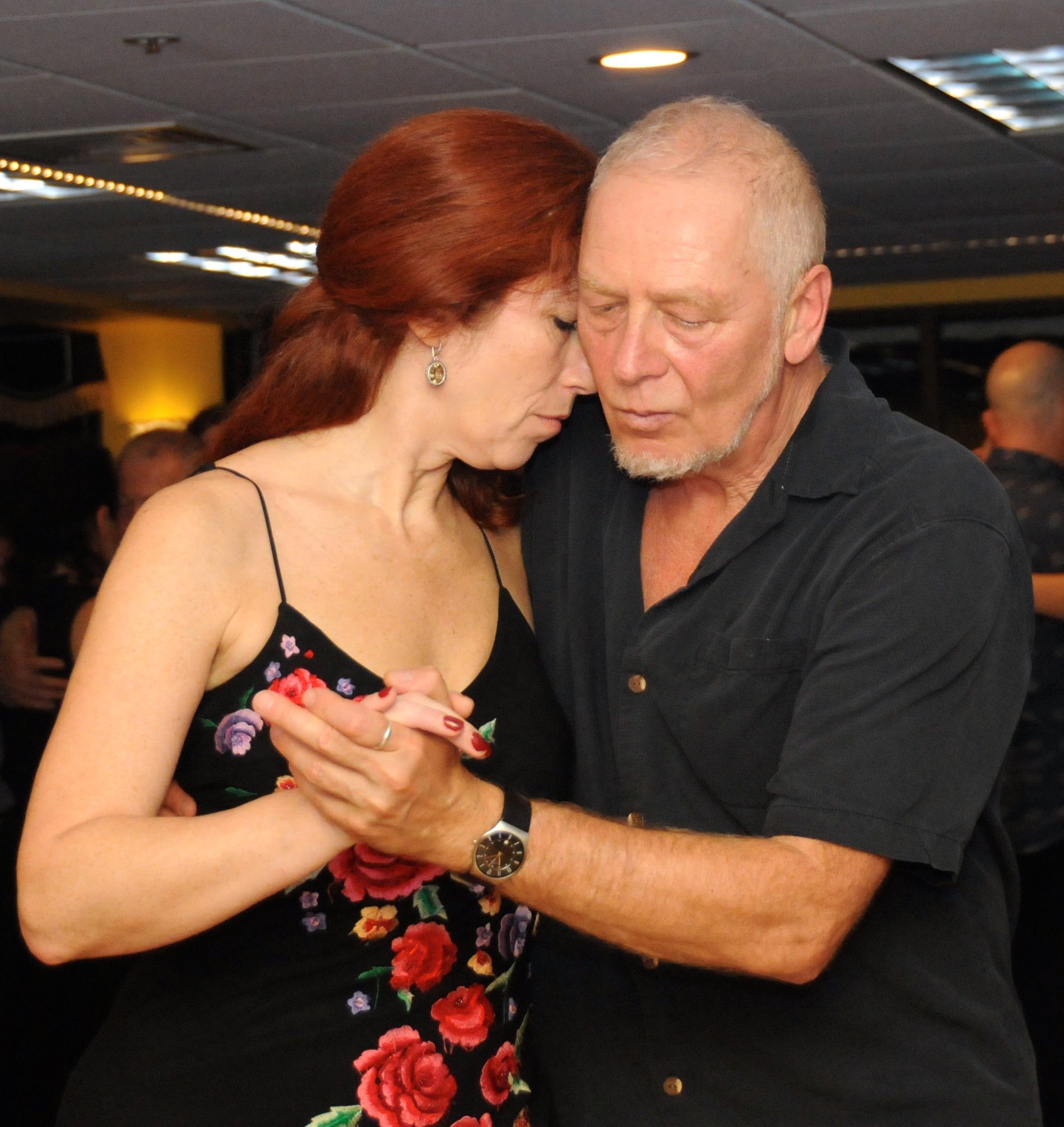Understanding Mirada in Argentine Tango: A Guide for Followers
Argentine Tango is not just a dance;
it's a language of intimate communication, expressing emotions and stories through movements, gestures, and the unspoken connection between partners.
One of the unique aspects of this dance is the way dancers invite and accept dances, especially in traditional milongas (Tango dance events).
The "mirada" plays a pivotal role in this invitation process, particularly for followers.
This article delves into what mirada is and how followers can use it to their advantage, along with other strategies to be noticed and asked for a dance.
The Essence of Mirada
Mirada, which translates to "look" or "glance" in Spanish, is a subtle yet powerful way of communication in the Tango scene.
Notice how the lady used her gaze subtly to catch the attention of the man she wanted to dance with.
It is the way a leader (often the male dancer) invites a follower (often the female dancer) to dance, using eye contact.
This non-verbal invitation respects the traditional codes of Tango and maintains the elegance and respect that the dance embodies.
The process involves the leader scanning the room for a potential dance partner. When the leader's gaze meets the gaze of a follower, and the follower maintains or returns the gaze, it indicates an interest in dancing. This mutual exchange is the mirada. If the follower is not interested, a simple avert of the eyes is a polite decline. This method allows for a respectful and discreet way to invite and accept dance invitations, without the need for a verbal exchange.
Using Mirada to Your Advantage
As a follower, understanding and effectively using mirada can greatly enhance your Tango experience. Here are some tips on how to use mirada effectively:
1. Be Aware and Present
Always be aware of your surroundings and who is around you. Leaders are more likely to initiate mirada with followers who seem engaged and present in the moment.
2. Positioning
Position yourself strategically in the milonga. Being in areas where you are more visible and accessible makes it easier for leaders to initiate eye contact with you.
3. Eye Contact
When you catch a leader's gaze, hold it briefly to show your interest. A gentle smile or a nod can also affirm your willingness to dance.
4. Body Language
Your body language speaks volumes. Even before the mirada, how you carry yourself, your openness, and your demeanor can attract invitations to dance.
5. Respect the Code
Understanding and respecting the codes of Tango, including the use of mirada, not only shows your appreciation for the dance but also earns you respect within the community.
Beyond Mirada: Other Ways to Be Noticed
While mirada is central to the traditional invitation process in Argentine Tango, there are other ways followers can increase their chances of being asked to dance:
1. Cabeceo
Closely related to mirada,
cabeceo is the slight nod that follows the mutual gaze, sealing the invitation.
Followers can practice a subtle, affirmative nod in response to a leader's cabeceo.
2. Dress to Impress
Without compromising your comfort and ability to dance, wearing something that makes you feel confident and stands out (in a tasteful way) can draw attention.
3. Engage in the Community
Being active and friendly in the Tango community, attending classes, workshops, and milongas regularly, helps you become a familiar face and increases your chances of being asked to dance.
4. Dance Quality
Leaders often notice followers who dance well. Improving your technique, musicality, and connection can make you a more desirable dance partner.
5. Positive Attitude
A positive, approachable attitude is attractive. Be respectful and gracious, whether accepting or declining a dance.
Real-World Examples and Advice
Consider the story of Elena, a seasoned Tango follower known in her community for her grace and elegance. Elena shared that her most memorable dances were initiated through a perfect exchange of mirada, where the mutual understanding and respect set the tone for a beautiful dance. She emphasizes the importance of being present, maintaining a positive demeanor, and respecting the codes of Tango.
Another example is Marco, a Tango leader who appreciates followers who understand the subtleties of mirada and cabeceo. He notes that a follower's response to mirada, their posture, and their engagement with the music and environment make them stand out and more likely to be invited to dance.
Navigating the Tango Floor: What Not to Do
While understanding and utilizing the mirada and other subtle cues in Argentine Tango can significantly enhance your dance experience, it's equally important to be aware of certain behaviors and practices to avoid. Being mindful of these can help maintain the harmony and respect that are foundational to Tango culture, especially in traditional milongas.
Avoiding Common Missteps
In the traditional Argentine Tango scene, adhering to the nuanced social etiquettes, such as mirada and cabeceo, is paramount.
These customs not only preserve the dance's elegant traditions but also respect individual preferences and boundaries.
However, situations arise that challenge these norms, illustrating the importance of understanding and upholding Tango etiquette.
An Illustrative Scenario: The Overeager Follower
Imagine a scenario involving a follower named Sofia, relatively new to the Tango community, eager to dance and perhaps unaware of or choosing to disregard the traditional codes of the milonga. Sofia spots a well-respected and highly skilled leader named Carlos, known for his expressive dance and deep understanding of Tango music. Carlos is enjoying a moment of rest at his table, chatting with friends and observing the dance floor.
Feeling confident and eager to dance with a leader of Carlos's caliber, Sofia decides to approach Carlos's table directly. Ignoring the subtleties of mirada and cabeceo, she stands conspicuously close, trying to catch his eye, and perhaps even goes as far as to ask him verbally for a dance, "Would you like to dance this next tanda with me?"
This approach puts Carlos in a delicate position.
Traditional Tango etiquette dictates that invitations to dance are subtly negotiated through eye contact (mirada) and a confirming nod (cabeceo), primarily to avoid putting either party in an awkward position of public refusal.
By directly approaching and verbally asking Carlos to dance, Sofia not only breaks this etiquette but also risks putting Carlos in an uncomfortable situation where he must either accept the invitation against his preference or decline it, potentially causing embarrassment or offense in front of others.
The Implications of Overstepping Etiquette
This scenario illustrates several key points:
1. Respect for Tradition
Tango traditions like mirada and cabeceo serve important functions in maintaining the social harmony of the milonga. They allow dancers to invite and accept dances discreetly, preserving dignity and avoiding public rejection.
2. Understanding Boundaries
Approaching someone's table and overstaying or directly asking for a dance can be perceived as invasive and disrespectful of personal space and social norms.
3. Community Dynamics
Such actions might not only affect Sofia's chances of dancing with Carlos but could also influence how she is perceived within the Tango community. Tango communities are often close-knit, and respect for etiquette contributes significantly to a dancer's reputation.
4. Personal Comfort
Leaders and followers alike attend milongas for enjoyment and the love of Tango. Respecting each other's comfort levels and preferences is key to ensuring a positive experience for everyone involved.
Lessons and Moving Forward
In Tango, as in many social dances, learning the steps is just the beginning.
Navigating the social landscape with grace and awareness of etiquette is equally, if not more, important.
This awareness fosters a respectful and inclusive environment, allowing the true spirit of Argentine Tango to flourish.
For followers, and indeed all Tango dancers, understanding and adhering to the traditional etiquettes of the dance floor is crucial.
These etiquettes are not just formalities but are designed to enhance the dance experience, ensuring that invitations to dance are made and accepted with mutual interest and respect.
While enthusiasm for dancing is wonderful, maintaining the delicate balance of Tango's social norms ensures that the milonga remains an enjoyable, respectful, and inviting place for everyone.
Becoming visible by becoming present (for both - Leadres and Followers)
Becoming visible in a milonga without breaking the traditional etiquette of Argentine Tango is about balancing visibility with respect and subtlety.
By dressing appropriately, positioning yourself well, using body language and traditional cues effectively, and engaging with the community and music, you can increase your chances of being asked to dance while upholding the cherished customs of Tango. Remember,
Tango is as much about the connections and interactions off the dance floor as it is about the dance itself.
Making yourself visible in a milonga without breaking the traditional codes of Argentine Tango can be an art in itself. Here are steps you can follow to increase your visibility and chances of being asked to dance, while still respecting the culture and etiquette of Tango.
Step 1: Dress Appropriately
Wearing something that makes you feel confident and comfortable, yet stands out, can help you catch the eye of potential dance partners.
Opt for attire that reflects the elegance and mood of Tango, but ensure your outfit does not hinder your ability to move.
Step 2: Position Yourself Strategically
Choose a spot in the room where you are visible to potential leaders without appearing too eager or invasive.
Avoid sitting in hidden corners or behind large groups. Being near the edge of the dance floor or in areas where people circulate can increase your chances of making eye contact.
Step 3: Maintain Open Body Language
Your posture and demeanor can say a lot about your willingness to dance.
Sit or stand with an open posture, avoid crossing your arms, and engage with the music and the environment. This indicates to leaders that you are approachable and interested in dancing.
Step 4: Use Mirada and Cabeceo Effectively
Utilize the traditional method of mirada and cabeceo by scanning the room gently for potential dance partners. If you catch someone's eye, a subtle smile or nod can signal your interest. Remember, this should be a discreet and respectful exchange.
Step 5: Engage Socially
While direct verbal invitations are not the norm in traditional milongas, being sociable can increase your visibility. Engaging in conversations during breaks or complimenting someone's dance respectfully can make you more memorable and approachable.
Step 6: Show Appreciation
After a dance, showing genuine appreciation to your partner can make a positive impression not just on them but also on others who might notice your graciousness. A simple "thank you" and a smile can go a long way.
Step 7: Participate Regularly
Frequent participation in milongas, classes, and workshops not only improves your dance skills but also makes you a familiar face in the community. Being recognized and known as a pleasant and respectful dancer can naturally increase your invitations to dance.
Step 8: Enjoy the Music and Environment
Even when not dancing, engage with the music, tap your foot, or nod your head to the rhythm. Showing that you enjoy the music and the atmosphere of the milonga can make you appear more connected to the essence of Tango, making leaders more inclined to invite you to share a dance.
The essence at the end is mutual enjoyment
Argentine Tango offers a beautiful, complex world of non-verbal communication, shared experiences, and artistic expression.
The dance floor is a canvas where respect, etiquette, and passion come together to create unforgettable moments.
The essence of Argentine Tango lies in connection, communication, and mutual enjoyment.
Every dancer, regardless of their role or level, contributes to the atmosphere of the milonga. By avoiding these common missteps and embracing the respectful and considerate practices inherent in Tango culture, you contribute to a positive, inclusive, and enjoyable environment for all.
Whether you're a seasoned dancer or new to the scene, understanding both what to do and what not to do can greatly enhance your experience and the experiences of those around you in the vibrant world of Argentine Tango.











